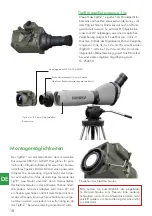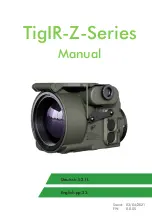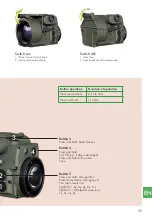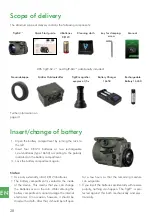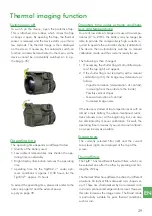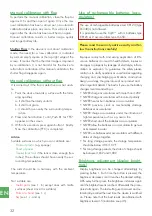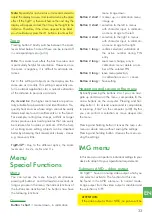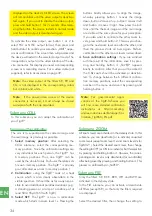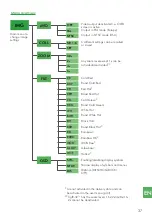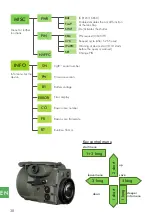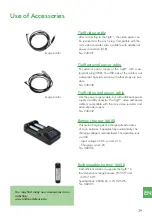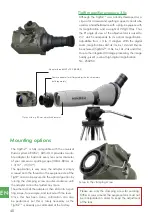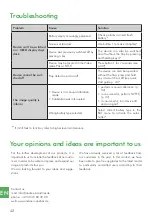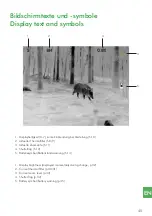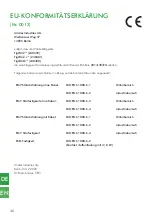
31
EN
BH = Black Hot
Heat sources are shown in dark, picture is more natural, easier orientation.
BBH = Boost Black Hot
The boost variant of the BH filter optimizes the brightness dynamics. This means
that even less warm objects are displayed better. This facilitates orientation, e.g. in
interiors where often all objects have the same temperature. It is often also more
suitable in humid weather. In boost mode, sharpness is also optimized. In sunshi-
ne, this filter may also be unsuitable.
RB = Rainbow
The Rainbow filter is a technical filter that can be used to assess building insulati-
on. The color gradient is no longer displayed monochrome as with the previously
described filters. Instead, a false color representation takes place. The course
from warm to cold goes over the colors white, red, yellow, green, blue and black.
RBHC = Rainbow HC
HC filter is similar to the Rainbow filter, except that each color transition still con-
tains a brightness coding to black. This ensures even stronger contrasts at the
transitions from one color to the other and makes even smaller temperature dif-
ferences visible. With this filter, thermally largely homogeneous surfaces such as
walls can be particularly well inspected for changes (e.g. wet areas). However, the
orientation and classification of temperature ranges is hardly possible.
IRON = Iron Bow
Also a technical filter, in which heat sources are displayed in a limited false color
range. The process from warm to cold takes place in the colors white, yellow,
orange, purple and blue. Heat sources are highlighted by an increased contrast.
The dynamics of less warm areas are high.
GLOW = Glowbow
A simple filter, in which heat sources are shown in yellow, colder areas remain
red. In this way, humans and animals are highlighted. If it is used in the forest at
night, a reduced glare effect can be expected, but this is significantly better with
the tactical red filters.
HOT = Hottest
A very popular filter among hunters. Heat sources such as animals and humans
are shown in orange, while all cooler areas remain black and white. This allows a
better orientation. This filter is especially recommended in the second half of the
night, when inanimate objects have cooled down significantly. Otherwise, it may
happen that e.g. trees and larger stones still radiate too much residual heat and
thus also appear orange.


